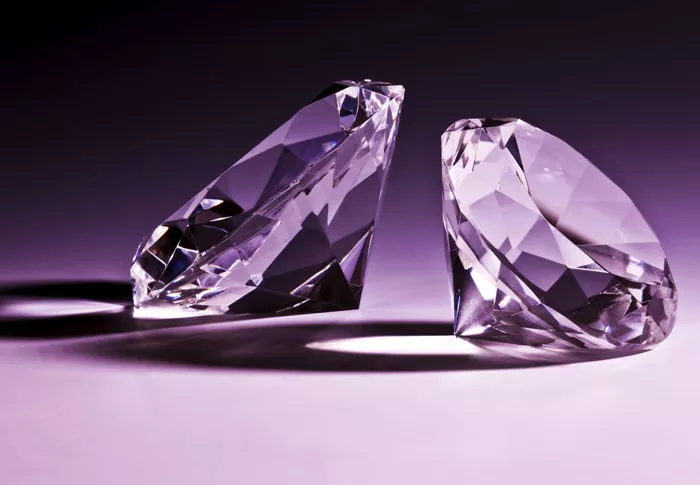The Indian jewellery market is undergoing a significant transformation as lab-grown diamonds gain popularity. This trend presents new opportunities and challenges for established industry players, such as Titan. As consumers increasingly embrace synthetic diamonds, the landscape of jewellery buying is shifting, particularly in the affordable luxury segment.
The Rise of Lab-Grown Diamonds
Lab-grown diamonds, often referred to as synthetic diamonds, are produced in controlled environments using advanced technology that simulates the natural diamond formation process. Unlike mined diamonds, which are extracted from the earth, these diamonds are created in laboratories. The growing interest in lab-grown diamonds has ignited conversations about their impact on traditional jewellery sales.
Experts are observing that while lab-grown diamonds are creating excitement in the affordable luxury market, they may exert pressure on segments such as daily wear jewellery. However, core wedding collections are expected to remain largely unaffected, as consumers typically view these purchases as more significant investments.
Market Disruption and Opportunities
As lab-grown diamonds continue to penetrate the market, traditional jewellers must adapt to this new reality. The appeal of lab-grown diamonds lies not only in their ethical and environmental benefits but also in their affordability. Many consumers see them as a viable alternative to natural diamonds, especially for larger purchases. This shift could lead to an expansion of the consumer base, as more individuals consider investing in diamond jewellery for the first time.
Senco Gold & Diamonds, a key player in the industry, has recognized the potential of the lab-grown diamond market. The company forecasts that this segment, along with other non-jewellery offerings, will contribute approximately 5% to its revenue within the next four to five years. This projection underscores the growing acceptance of synthetic diamonds among consumers.
Senco’s subsidiary, ‘Sennes Fashion,’ plans to diversify its product line by exploring a range of luxury items, including lab-grown diamonds, leather accessories, and perfumes. This strategic move reflects the company’s commitment to staying relevant in a rapidly changing market.
Challenges of Price Volatility
Despite the optimistic outlook for lab-grown diamonds, challenges remain. Industry experts have raised concerns about price fluctuations in this sector. Recent oversupply has led to dramatic price drops, with some lab-grown diamonds experiencing a decline of 70-90% in value over the past few years. This instability raises questions about the long-term value of synthetic diamonds and may hinder consumer trust in this emerging market.
Price stability is crucial for fostering confidence among consumers. As lab-grown diamonds become more mainstream, the industry must ensure that prices reflect their quality and uniqueness. If prices continue to fluctuate dramatically, it could deter potential buyers who fear they might not be making a sound investment.
The Changing Consumer Landscape
The question of whether lab-grown diamonds are cannibalizing the sales of natural diamonds is a critical consideration for the industry. Sheth Madhavan, a notable figure in the jewellery sector, addressed this concern by highlighting the evolving consumer landscape. According to Madhavan, the growth of the lab-grown diamond market is driven by a combination of new consumers entering the diamond market and existing customers opting for synthetic alternatives for larger purchases.
In India, historically, fewer than 5% of women have owned diamonds, while a staggering 95% aspire to own them. The introduction of lab-grown diamonds is changing this dynamic. Consumers who previously may have felt priced out of the market for natural diamonds are now finding lab-grown options more accessible and appealing.
The Appeal of Lab-Grown Diamonds
One of the most significant draws of lab-grown diamonds is their ethical sourcing. With increasing awareness about the environmental and social implications of diamond mining, consumers are seeking alternatives that align with their values. Lab-grown diamonds are viewed as a more sustainable choice, free from the ethical dilemmas associated with traditional diamond mining.
Additionally, lab-grown diamonds offer consumers greater transparency regarding their origins. This transparency is becoming increasingly important to a new generation of buyers who prioritize ethical consumption. As consumers become more informed, their purchasing decisions are influenced by a desire to make responsible choices.
The Future of the Indian Jewellery Industry
The future of the Indian jewellery industry is poised for evolution as lab-grown diamonds become more mainstream. The rise of synthetic diamonds presents an opportunity for jewellers to innovate and expand their of ferings. Industry giants like Titan must adapt to this changing landscape to maintain their market share.
Retailers may need to re-evaluate their marketing strategies and product lines to accommodate the growing demand for lab-grown diamonds. By emphasizing the unique benefits of synthetic diamonds—such as affordability, ethical sourcing, and customization options—jewellers can attract a broader range of consumers.
Moreover, partnerships between traditional jewellers and lab-grown diamond producers could facilitate the integration of these products into existing collections. This collaboration can provide customers with a diverse selection that meets their preferences and values.
Conclusion
As lab-grown diamonds continue to disrupt the Indian jewellery market, the industry faces both challenges and opportunities. The rise of synthetic diamonds is reshaping consumer perceptions and buying behaviors, particularly in the affordable luxury segment. While established players like Titan may feel the pressure, they also have the chance to innovate and adapt to this evolving landscape.
The acceptance of lab-grown diamonds signifies a shift towards more ethical and sustainable practices within the jewellery industry. As consumers seek products that align with their values, the future of the Indian jewellery market will depend on how well it can respond to these changing demands. The next few years will be crucial in determining the long-term impact of lab-grown diamonds on traditional jewellery sales and the industry’s overall landscape.
Related topics:

